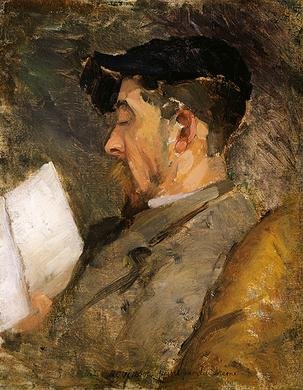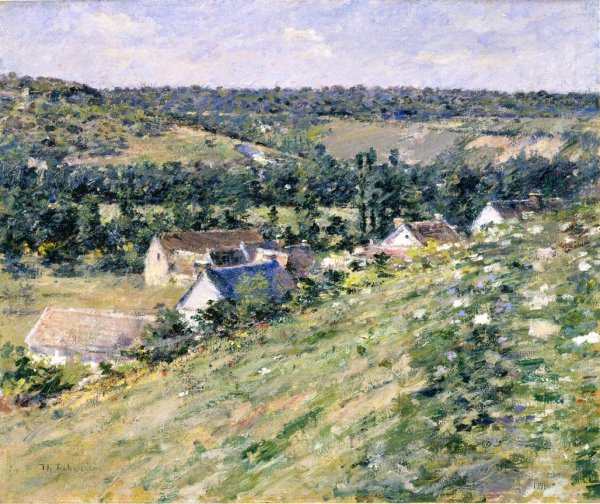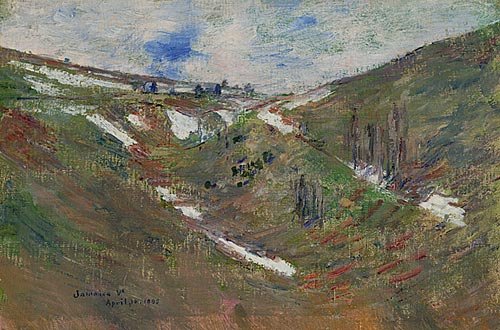Theodore Robinson Biography In Details
Training and early career

Theodore Robinson was born in Irasburg, Vermont. His family moved to Wisconsin, and Robinson briefly studied art in Chicago. In 1874 he journeyed to New York City to attended classes at the National Academy of Design and the Art Students League.
In 1876 he traveled to Paris to study under Carolus-Duran and, at the École des Beaux-Arts, with Jean-Léon Gérome.He exhibited his first paintings in Paris in 1877, and spent the summer of that year at Grez-sur-Loing. After trips to Venice and Bologna, he returned to the United States in 1879 for several years.
During this time Robinson painted in a realist manner, loosely brushed but not yet impressionistic, often depicting people engaged in quiet domestic or agrarian pursuits.
Robinson at Giverny

In 1884 Robinson returned to France where he would live for the next eight years, visiting America only occasionally. Robinson gravitated to Giverny, which had become a center of French impressionist art under the influence of Claude Monet.
Historians are unclear when Robinson met Monet, but by 1888 their friendship was enough for Robinson to move in next door to the famous impressionist. Robinson's art shifted to a more traditional impressionistic manner during this time, likely due to Monet's influence. While a number of American artists had gathered at Giverny, none were as close to Monet as Robinson. Monet offered advice to Robinson, and he likewise solicited Robinson for opinions on Monet's own works in progress.
At Giverny, Robinson painted what art historians regard as some of his finest works. These depicted the surrounding countryside in different weather, in the plein air tradition, sometimes with women shown in leisurely poses. An example of his mature work during this period is La Débacle (1892) in the collection of Scripps College, Claremont California.
Return to America
Robinson left France and Monet for the final time in 1892, although he meant to return. Back in America, Robinson obtained a teaching post with the Brooklyn Art School and conducted summer classes in Napanoch, New York, near the Catskill Mountains, where he painted several canal scenes. He also taught at Evelyn College in Princeton, New Jersey, and later at the Pennsylvania Academy of the Fine Arts in Philadelphia.
With New York City as his base, Robinson circulated among a growing number of American artists pursuing Impressionism. He was particularly close to John Henry Twachtman and Julian Alden Weir, and spent time at the nearby Cos Cob Art Colony in Connecticut. There he painted a series of boat scenes at the Riverside Yacht Club which have come to be regarded as among his finest works.
Final years

While his reputation as an important American impressionst was growing, Robinson still needed to teach to support himself. He also harbored doubts about the quality of his work.
In 1895 enjoyed a productive period in Vermont, and in February 1896 he wrote to Monet about returning to Giverney, but in April he died of an acute asthma attack in New York City. He was 43 years old.
Today Robinson's paintings are in the collections of many major museums including the Metropolitan Museum of Art in New York City; the Corcoran Gallery of Art, Washington, D.C.; and the Art Institute of Chicago. (From Wikipedia)




